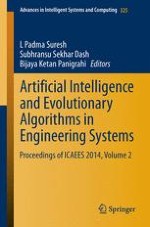2015 | OriginalPaper | Buchkapitel
A Knowledgeable Feature Selection Based on Set Theory for Web Intrusion Detection System
verfasst von : Nalini Priya Ganapathi, Vivek Duraivelu
Erschienen in: Artificial Intelligence and Evolutionary Algorithms in Engineering Systems
Verlag: Springer India
Aktivieren Sie unsere intelligente Suche, um passende Fachinhalte oder Patente zu finden.
Wählen Sie Textabschnitte aus um mit Künstlicher Intelligenz passenden Patente zu finden. powered by
Markieren Sie Textabschnitte, um KI-gestützt weitere passende Inhalte zu finden. powered by
